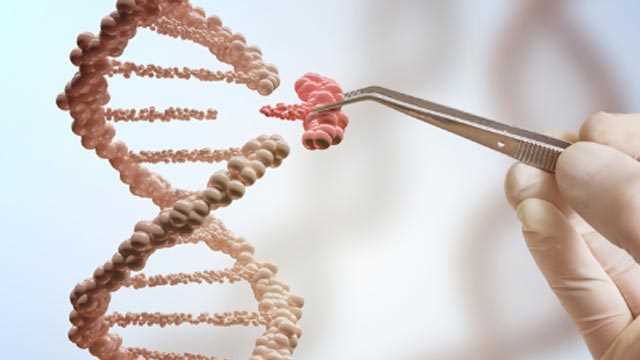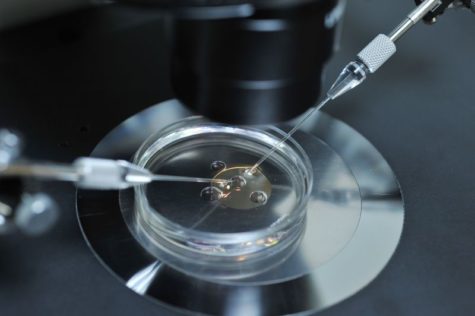
By: Savi Raghuraman | News Editor
March 22, 2019
In November 2018, the scientific community erupted in a mix of curiosity and outrage at the claims of two twins being born, genetically altered by a Chinese scientist to have resistance to HIV, the virus that can lead to AIDS. The ethics of the scientist’s procedure were dubious for a number of reasons, but the most notable was its central premise of using gene editing technology to make lasting changes to the genomes of future generations for the sake of their health.
To some scientists, like the man responsible for the HIV-resistant twins, editing babies’ genes to prevent disease is just the next step in the everlasting human quest to save lives and mitigate suffering. However, at the present, there are too many questions unanswered and risks unaddressed in genetically engineering human offspring for such a practice to be ethical or responsible.

The scientist from the HIV study used CRISPR, a gene editing technology that has become increasingly widespread in recent years due to its accessibility and versatility. Other types of genetic technology has already begun to be applied to humans. For example, gene therapy can help a sick person deal with their symptoms with drugs that target specific genes, and parents with risk of passing a heritable disease to their offspring may use preimplantation genetic diagnosis to screen lab-fertilized embryos for their disease and selecting an embryo without the disease to implant. While these techniques have their own risks, the use of CRISPR to purposefully alter the genomes of reproductive cells, like sperm, eggs, and embryos, is more socially and medically problematic.
CRISPR is still a relatively new technology with a host of unsolved problems. Sometimes, the tool mistakenly edits genes that look similar to their target gene instead of the actual target, or the gene editing only affects part of the genome, so some cells have normal genes and the other ones have the altered version. When it comes to the intricate human genome, tiny mistakes can have huge ramifications. These risks cannot be tolerated with an entire future human bloodline at stake.
Another question that scientists must ask themselves is whether editing a genome to select for a particular trait pose health risks not present otherwise. Most genes have more than one effect. For example, researchers in the 1990s modified a gene linked to memory in mice, finding that the modifications had the desirable result of improving learning and memory but also had the unexpected consequence of increasing the altered mice’s sensitivity to pain. Another example is the CCR5 gene, the target of the aforementioned HIV-resistance experiment. CCR5 translates to a protein channel that allows the HIV virus to enter the cell. Without a normal copy of it, humans are immune to HIV, but they face a higher risk of contracting other viruses, such as the West Nile virus, and of dying from the flu. Additionally, researchers at UCLA discovered that lowering CCR5 production resulted in enhanced learning and memory formation. So, if the gene alteration worked perfectly, not only will these twins theoretically be resistant to HIV and more susceptible to other viruses, they might also be smarter, all because of changes to a single gene.
These possible side effects of genetic engineering before birth pose a new question: Should parents be allowed to manipulate their children’s genetic information, which will have a profound impact on their lives, when the children cannot consent? Many would argue that changing a person so drastically, even dangerously from their natural state erodes their fundamental right to free will if they’re not given a say in the matter, which individuals cannot do when in embryo form. This lies in stark contrast to humans’ ability to make their own choices as to if and how they want to prevent or treat their health issues in a way that fits their values.
Besides, editing the genome of reproductive cells doesn’t just affect the children, it affects all of the children’s descendants, who will inherit the edited genome of the first generation. Any changes, and any unintended side effects, could be permanent in the bloodline unless further gene editing is used. Not only does engineering the reproductive cells violate the rights of the child, then, it violates the rights of countless future generations.
Even once CRISPR is perfect and side effects can be avoided, the long-term social consequences of genetically engineering offspring will exacerbate already existing inequities. Genetic engineering of embryos is expensive, so it will mainly be a resource for the wealthy. If children born to wealthy families are more predisposed for good health and long lives than children from the lower and middle classes, the wealthy gain yet another advantage helping them to success, and the merit system our society so prizes dissolves further.
Most fearsome of all are the new opportunities for manipulation of non-disease traits that engineering health-related traits inevitably opens up. Once more of the human genome is mapped and new technology is developed, scientists may be able to make “designer babies,” selecting for desirable traits unrelated to health, such as higher intelligence, natural athleticism, or striking eye color. Eugenics, the bigoted theories that arose in the early 20th century about breeding humanity’s master race and sterilizing the disabled, could easily return in a new form, molding future generations to fit the powerful’s narrow set of values. However, without the technology or knowledge to implement it, this scenario is thankfully still a hypothetical.
Currently, gene alterations that would extend to future generations are explicitly prohibited by over 40 countries and few international human rights treaties, but the United States has no legal ban or limitations on this practice. Nevertheless, if humanity hopes to preserve the biological integrity of future generations, we must avoid engineering our children, even if it seems in their best interests.

Leave a Reply